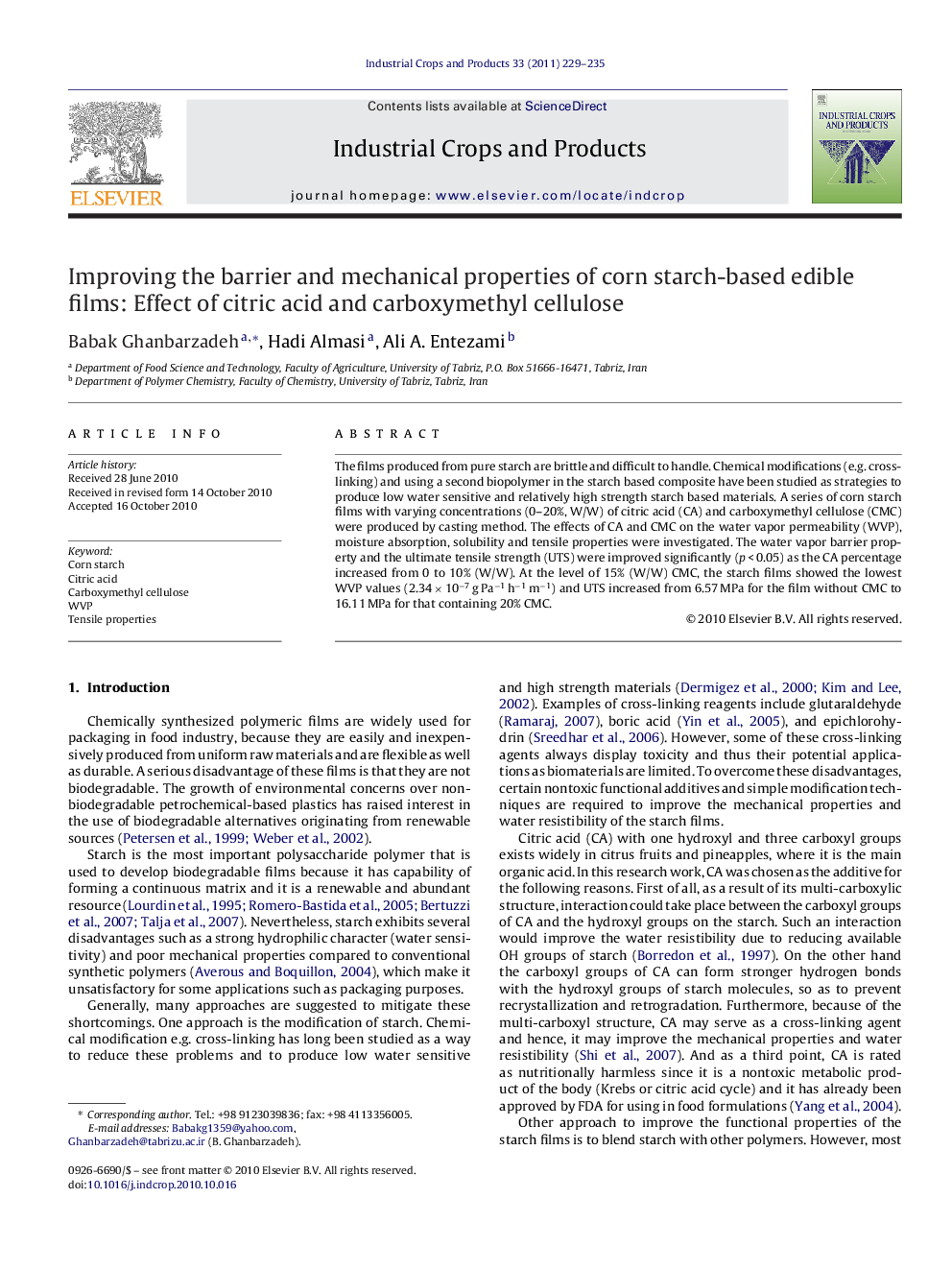| Article ID | Journal | Published Year | Pages | File Type |
|---|---|---|---|---|
| 6377570 | Industrial Crops and Products | 2011 | 7 Pages |
The films produced from pure starch are brittle and difficult to handle. Chemical modifications (e.g. cross-linking) and using a second biopolymer in the starch based composite have been studied as strategies to produce low water sensitive and relatively high strength starch based materials. A series of corn starch films with varying concentrations (0-20%, W/W) of citric acid (CA) and carboxymethyl cellulose (CMC) were produced by casting method. The effects of CA and CMC on the water vapor permeability (WVP), moisture absorption, solubility and tensile properties were investigated. The water vapor barrier property and the ultimate tensile strength (UTS) were improved significantly (p < 0.05) as the CA percentage increased from 0 to 10% (W/W). At the level of 15% (W/W) CMC, the starch films showed the lowest WVP values (2.34 Ã 10â7 g Paâ1 hâ1 mâ1) and UTS increased from 6.57 MPa for the film without CMC to 16.11 MPa for that containing 20% CMC.
Research highlightsⶠThe corn starch films containing glycerol and CA were prepared. ⶠThe addition of citric acid (CA) improved the barrier properties of the resulted films. ⶠAs well as, the addition of CA reduced the moisture absorption and solubility of films. ⶠAt the level of 10% (W/W) CA, the ultimate tensile strength (UTS) of the composite films also increased. ⶠWhen higher amount of CA was added (from 10 to 20%, W/W), the UTS decreased from 6.57 to 1.80 MPa and the SB increased from 66% to 80%. ⶠThe addition of CMC improved the moisture resistance of the composites. ⶠAt the level of 15% (W/W) CMC, the blend films showed the lowest WVP values. ⶠBy the addition of 15% (W/W) CMC, the moisture absorption and solubility of the resulted films decreased. ⶠCMC also demonstrated an important influence on the mechanical properties. Adding CMC (20%, W/W) could increase the UTS of the films (containing 10%, W/W CA). ⶠWith increasing the CMC concentration, the strain to break values was not reduced appreciably.
